

For almost a decade, Logan has been responsible for developing and implementing digital health products and solutions. With a strong background in the digital health and digital therapeutic space, some career highlights have included creating recurring revenue streams, new product/service exploration, product/service ideation, and go-to-market strategies.
Available For: Advising, Authoring, Consulting, Influencing, Speaking
Travels From: Boston, Massachusetts
Speaking Topics: Digital Health, Remote Patient Monitoring, Connected Health Solutions
| Logan Harper, MS | Points |
|---|---|
| Academic | 0 |
| Author | 51 |
| Influencer | 15 |
| Speaker | 33 |
| Entrepreneur | 65 |
| Total | 164 |
Points based upon Thinkers360 patent-pending algorithm.
 The Future of AI in Healthcare
The Future of AI in Healthcare
Tags: Emerging Technology, HealthTech, Innovation
 ChatGPT AI Use Case: Digital Health
ChatGPT AI Use Case: Digital Health
Tags: Emerging Technology, HealthTech, Generative AI
 Innovation in Digital Oncology Wearables | New Wearable Device Measures the Changing Size of Tumors Below the Skin
Innovation in Digital Oncology Wearables | New Wearable Device Measures the Changing Size of Tumors Below the Skin
Tags: Emerging Technology, Health and Wellness, HealthTech
 Patient Perspectives: The Concern for Data Security and Privacy
Patient Perspectives: The Concern for Data Security and Privacy
Tags: Emerging Technology, HealthTech, Privacy
 Healthcare AI: From Theory to Practice
Healthcare AI: From Theory to Practice
Tags: AI, Health and Wellness, HealthTech
 Hinge Health Releases 2022 State of Musculoskeletal Health Report | Reveals Inequities in MSK Care
Hinge Health Releases 2022 State of Musculoskeletal Health Report | Reveals Inequities in MSK Care
Tags: Emerging Technology, Health and Wellness, HealthTech
 OncoHost Raises $35 Million Series C to Improve Personalized Oncology Treatment
OncoHost Raises $35 Million Series C to Improve Personalized Oncology Treatment
Tags: AI, Emerging Technology, HealthTech
 Abbott Bolsters Its Digital Health Offering with Latest NeuroSphere myPath Application
Abbott Bolsters Its Digital Health Offering with Latest NeuroSphere myPath Application
Tags: Emerging Technology, Health and Wellness, HealthTech
 Digital Medicine Society Launches Toolkit to Support Reimbursement for New Drugs Developed Using Digital Tools
Digital Medicine Society Launches Toolkit to Support Reimbursement for New Drugs Developed Using Digital Tools
Tags: Emerging Technology, Health and Wellness, HealthTech
 Edison Digital Health Platform | GE Healthcare Launches New Digital Health Platform
Edison Digital Health Platform | GE Healthcare Launches New Digital Health Platform
Tags: AI, Emerging Technology, HealthTech
 Press Ganey 2021 Consumer Experience Trends in Healthcare Report
Press Ganey 2021 Consumer Experience Trends in Healthcare Report
Tags: Emerging Technology, Health and Wellness, HealthTech
 Verana Health Launches Qdata Glaucoma to Deliver Real-World Insights into Glaucoma Patient Journey
Verana Health Launches Qdata Glaucoma to Deliver Real-World Insights into Glaucoma Patient Journey
Tags: AI, Emerging Technology, HealthTech
 Tandem Diabetes Care Announces FDA Clearance for the t:slim X2 Insulin Pump to Bolus Using the t:connect Mobile App
Tandem Diabetes Care Announces FDA Clearance for the t:slim X2 Insulin Pump to Bolus Using the t:connect Mobile App
Tags: Customer Experience, HealthTech, Innovation
 Epicore Biosystems Raises $10M Series A for Personalized Hydration and Metabolic Health | Digital Health Solutions
Epicore Biosystems Raises $10M Series A for Personalized Hydration and Metabolic Health | Digital Health Solutions
Tags: Emerging Technology, HealthTech, Innovation
 Labcorp OnDemand | Labcorp Launches Consumer-Focused Digital Health Platform
Labcorp OnDemand | Labcorp Launches Consumer-Focused Digital Health Platform
Tags: Health and Wellness, HealthTech, Innovation
 Mark Cuban Cost Plus Drug Company’s Online Pharmacy Launches with Low Prices on 100 Lifesaving Prescriptions
Mark Cuban Cost Plus Drug Company’s Online Pharmacy Launches with Low Prices on 100 Lifesaving Prescriptions
Tags: Health and Wellness, HealthTech, Innovation
 Digital Therapeutics Leader Pear Therapeutics Announces Expanded Support to Point32Health Members in Recovery from Substance Use Disorders
Digital Therapeutics Leader Pear Therapeutics Announces Expanded Support to Point32Health Members in Recovery from Substance Use Disorders
Tags: Health and Wellness, HealthTech, Innovation
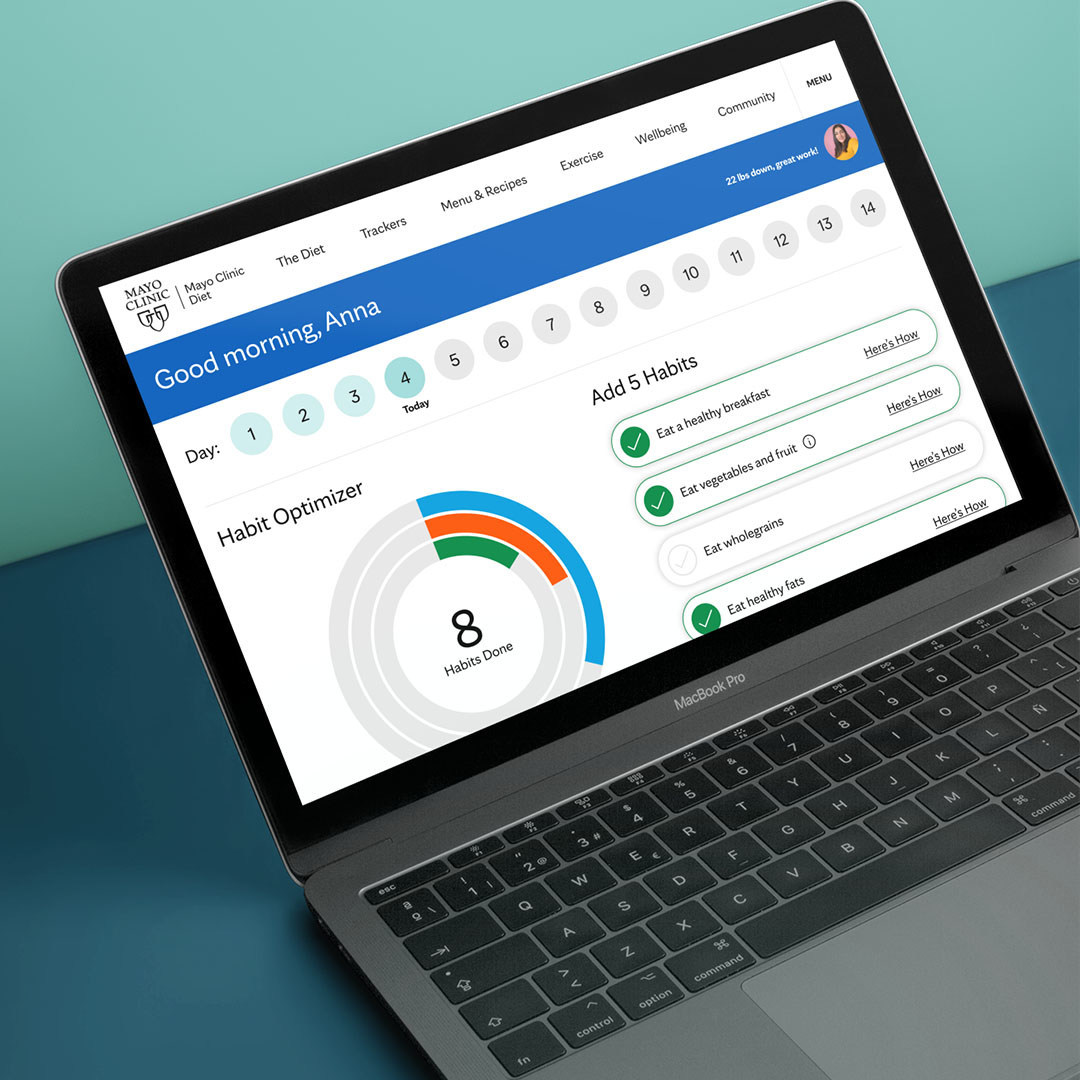 The New Mayo Clinic Diet Program Announces National Launch
The New Mayo Clinic Diet Program Announces National Launch
Tags: Digital Transformation, Health and Wellness, HealthTech
 Well Raises $70M in Series B Funding to Expand Consumer-Focused AI-Powered Digital Health Platform
Well Raises $70M in Series B Funding to Expand Consumer-Focused AI-Powered Digital Health Platform
Tags: AI, Emerging Technology, HealthTech
 Embold Health Raises $20M Series B to Focus on National Expansion
Embold Health Raises $20M Series B to Focus on National Expansion
Tags: HealthTech, Innovation, Startups
 Therapixel Receives FDA Clearance for AI-Based Breast Cancer Screening Software MammoScreen on 3D Mammography
Therapixel Receives FDA Clearance for AI-Based Breast Cancer Screening Software MammoScreen on 3D Mammography
Tags: AI, Emerging Technology, HealthTech
 Babyscripts Raises Additional $7.5M for Virtual Maternity Care National Expansion
Babyscripts Raises Additional $7.5M for Virtual Maternity Care National Expansion
Tags: Health and Wellness, HealthTech, Startups
 SWORD Health Raises $163M Series D to Expand MSK Solutions, Reaches $2B Valuation
SWORD Health Raises $163M Series D to Expand MSK Solutions, Reaches $2B Valuation
Tags: Emerging Technology, HealthTech, Startups
 Videra Health Raises $3 Million in Seed Funding to Scale Remote Patient Monitoring for Behavioral Health
Videra Health Raises $3 Million in Seed Funding to Scale Remote Patient Monitoring for Behavioral Health
Tags: AI, HealthTech, Mental Health
 Introducing Tebra - A Digital Healthcare Technology Company Dedicated to Modernizing Healthcare Practices
Introducing Tebra - A Digital Healthcare Technology Company Dedicated to Modernizing Healthcare Practices
Tags: Health and Wellness, HealthTech, Startups
 Founder, Writer - Digital Health Times
Founder, Writer - Digital Health Times
Tags: Emerging Technology, Health and Wellness, HealthTech
 Co-Founder, Writer - CuriousHumans.org Blog
Co-Founder, Writer - CuriousHumans.org Blog
Tags: Emerging Technology, Health and Wellness, Innovation
 Top 150 Healthtech Exponentialists LinkedIn
Top 150 Healthtech Exponentialists LinkedIn
Tags: HealthTech
 Top 150 HealthTech Exponentialists LinkedIn - Ranked 128
Top 150 HealthTech Exponentialists LinkedIn - Ranked 128
Tags: Emerging Technology, HealthTech, Innovation
 Top 50 Thought Leader - Health and Wellness
Top 50 Thought Leader - Health and Wellness
Tags: Emerging Technology, Health and Wellness, HealthTech
 Healthtech Top 25 Thought Leader
Healthtech Top 25 Thought Leader
Tags: Emerging Technology, HealthTech, Innovation
 Top 25 Thought Leadership - HealthTech
Top 25 Thought Leadership - HealthTech
Tags: Emerging Technology, Health and Wellness, HealthTech
 Top 150 HealthTech Exponentialists LinkedIn
Top 150 HealthTech Exponentialists LinkedIn
Tags: HealthTech, Robotics, Healthcare
Tags: HealthTech, Robotics, Healthcare
 Top 50 Thought Leader - Health and Wellness
Top 50 Thought Leader - Health and Wellness
Tags: Health and Wellness
 Top 25 Thought Leader - Health and Wellness
Top 25 Thought Leader - Health and Wellness
Tags: Health and Wellness
 Healthtech Top 25 Thought Leader
Healthtech Top 25 Thought Leader
Tags: HealthTech
 Digital Health Digest: Strategies to Take RPM to the Next Level.
Digital Health Digest: Strategies to Take RPM to the Next Level.
Tags: Emerging Technology, Innovation, HealthTech
 HIMSS 2022
HIMSS 2022
Tags: Emerging Technology, HealthTech, Innovation
 RPM Summit 2022 | BRI Network | Las Vegas, NV
RPM Summit 2022 | BRI Network | Las Vegas, NV
Tags: Emerging Technology, HealthTech, Innovation
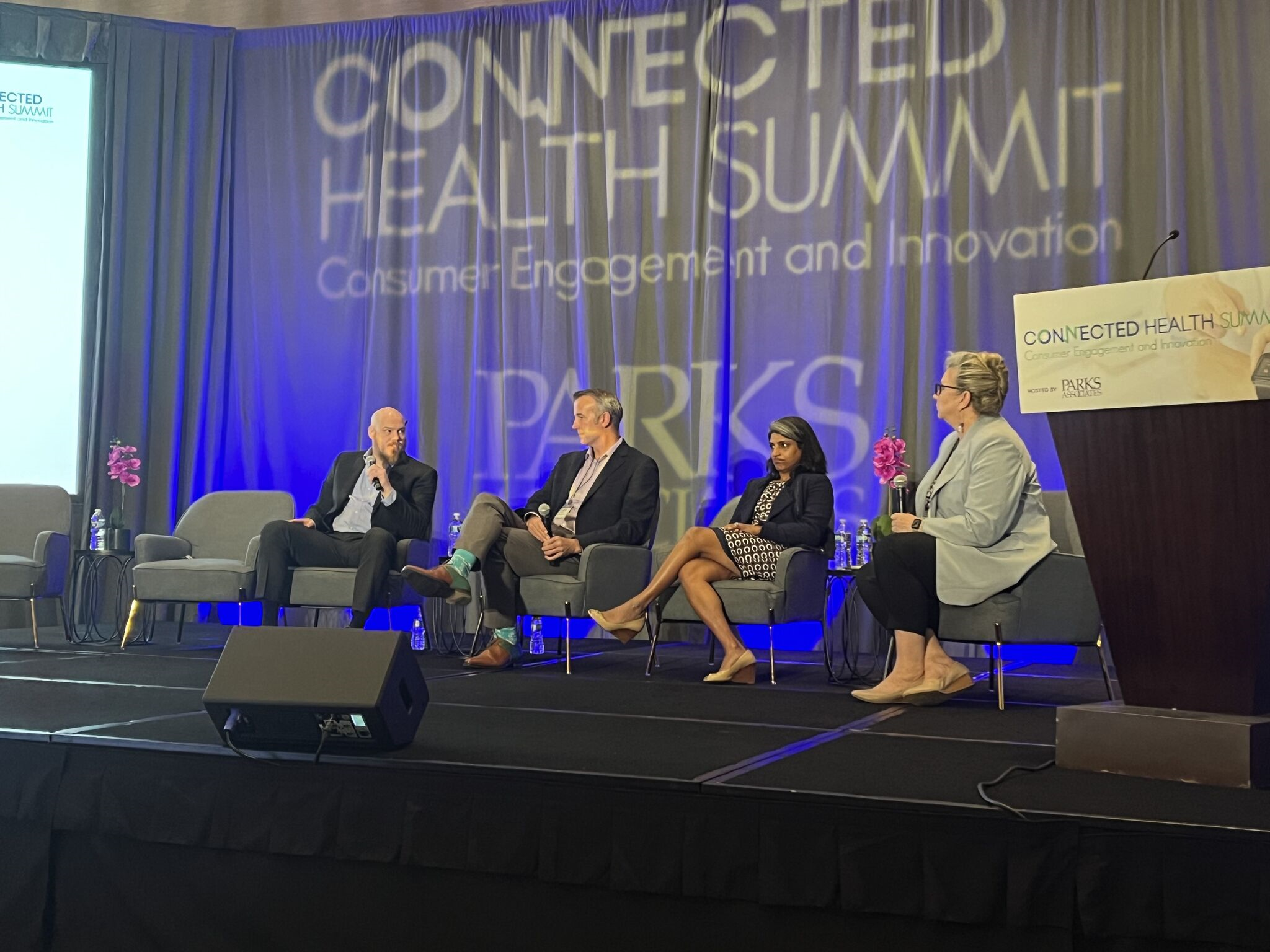 Physician Perspectives: Making Virtual Care Work
Physician Perspectives: Making Virtual Care Work
Tags: Emerging Technology, HealthTech, Innovation
 Strategies to take Remote Patient Monitoring to the Next Level
Strategies to take Remote Patient Monitoring to the Next Level
Tags: Emerging Technology, Innovation, HealthTech
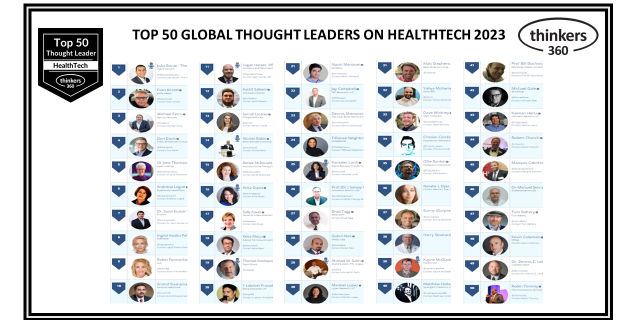 Top 50 Global HealthTech Influencers and Thought Leaders 2023
Top 50 Global HealthTech Influencers and Thought Leaders 2023
Tags: HealthTech
 Top 50 Global Thought Leaders and Influencers on HealthTech (March 2022)
Top 50 Global Thought Leaders and Influencers on HealthTech (March 2022)
Tags: Emerging Technology, HealthTech, Innovation
 Ronald Weinstein, MD Research Award - Best Research Oral Presentation | ATA Nexus 2024
Ronald Weinstein, MD Research Award - Best Research Oral Presentation | ATA Nexus 2024
Tags: HealthTech
 Strategies for Implementing Remote Monitoring - Pediatric Lung Transplant Center
Strategies for Implementing Remote Monitoring - Pediatric Lung Transplant Center
Tags: HealthTech, Innovation, Product Management
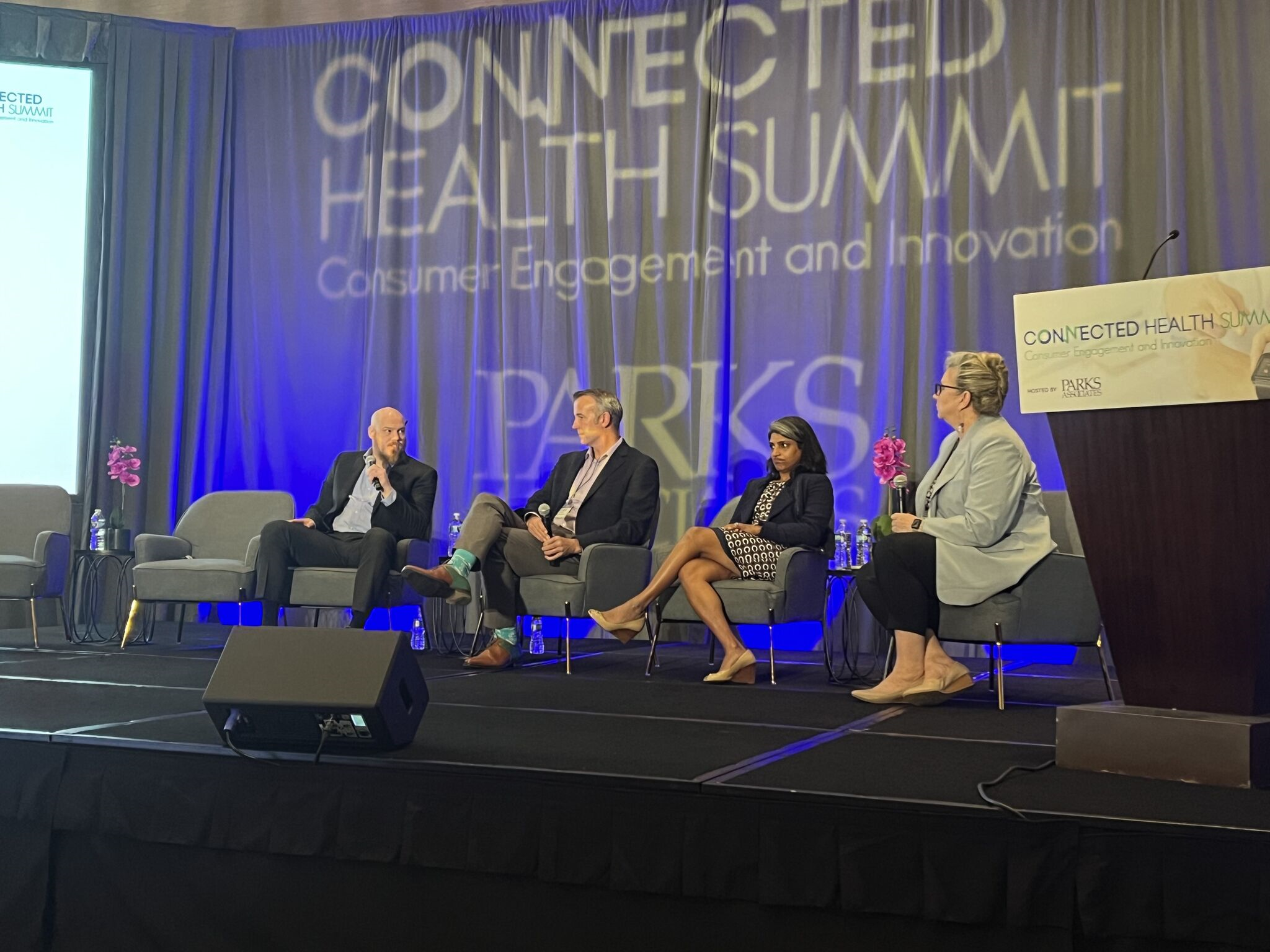 Physician Perspectives: Making Virtual Care Work
Physician Perspectives: Making Virtual Care Work
Tags: Emerging Technology, HealthTech, Innovation
 Digital Health Digest: Strategies to Take RPM to the Next Level
Digital Health Digest: Strategies to Take RPM to the Next Level
Tags: Emerging Technology, HealthTech, Health and Wellness
 Remote Patient Monitoring Solutions - Managing Hypertension
Remote Patient Monitoring Solutions - Managing Hypertension
Tags: Digital Transformation, HealthTech, Innovation
 Leveraging Digital Therapeutics for Diabetes Management
Leveraging Digital Therapeutics for Diabetes Management
Tags: AI, HealthTech, Innovation
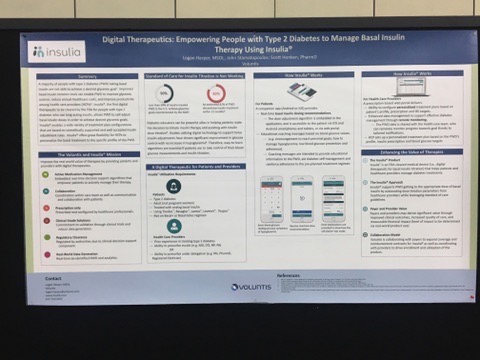 Digital Therapeutics: Empowering People with Type 2 Diabetes to Manage Basal Insulin Therapy Using Insulia
Digital Therapeutics: Empowering People with Type 2 Diabetes to Manage Basal Insulin Therapy Using Insulia
Tags: AI, HealthTech, Innovation
Tags: Emerging Technology, Health and Wellness, HealthTech
 Buying Home Blood Pressure Monitors to Support SMBP: How to Get Started
Buying Home Blood Pressure Monitors to Support SMBP: How to Get Started
Tags: Digital Transformation, HealthTech, Innovation
 Leveraging Digital Therapeutics for Chronic Disease Management
Leveraging Digital Therapeutics for Chronic Disease Management
Tags: Emerging Technology, HealthTech, Innovation
 ChatGPT's AI Use Case: Digital Health
ChatGPT's AI Use Case: Digital Health
The end of 2022 has seen a lot of news articles regarding sophisticated artificial intelligence chatbots such as ChatGPT, which can answer complex questions with lifelike insight. As the utilization of ChatGPT and other AI chatbots continues to be explored in various specialties, such as the digital health industry, the evolution of more in-depth responses will continue to see significant improvements over the next year. For the past few weeks, I’ve been asking ChatGPT to answer a few questions about digital health technologies and clinical applications.
Medicine is a humane endeavor where language enables key interactions for and between clinicians, researchers, and patients. Digital health tools that facilitate innovative methods and modalities to improve care, enable lifestyle change, and create efficiencies are progressing quickly. As healthcare organizations seek more customized, data-driven patient care, adopting technologies to promote digital engagement, data management, and workflow optimization is vital.
This article serves as a 2022 archive for some of the questions we want to continue asking ChatGPT over the foreseeable future and see the evolution of responses. Others in the digital health space have also curated replies they’ve received, so it will be interesting to see the evolution of the tool over time.
ChatGPT was created by OpenAI and launched in November 2022 as a tool to interact conversationally. Per the ChatGPT website, the dialogue format makes it possible for ChatGPT to answer follow-up questions, admit its mistakes, challenge incorrect premises, and reject inappropriate requests. ChatGPT is a sibling model to InstructGPT, which is trained to follow instructions in a prompt and provide a detailed response. OpenAI also states that the use of the tool, for now, is to help gather feedback on its strengths and weaknesses. During the research preview, usage of ChatGPT is free. As of December 2022, there’s no timeline for how long this tool will remain free.
Due to the maximum number of words in this article, to read the questions and responses from ChatGPT, click this link.
The use of AI algorithms goes beyond chatbot programs such as ChatGPT. Medicine is a humane endeavor where language enables key interactions for and between clinicians, researchers, and patients. Yet, today’s AI models for applications in medicine and healthcare have largely failed to fully utilize language. Large language models (LLMs) have demonstrated impressive natural language understanding and generation capabilities, but the quality bar for medical and clinical applications is high.
One use case researchers at Drexel University are exploring is whether one day we might be able to help doctors detect Alzheimer’s Disease in its early stages. In a broader use case, Google introduced a ChatGPT-like chatbot for healthcare called MultiMedQA. AIM (Analytics India Magazine) and other news outlets report that MultiMedQA combines HealthSearchQA, a new free-response dataset of medical questions sought online, with six existing open-question answering datasets covering professional medical exams, research, and consumer queries.
Google isn’t the first tech behemoth to venture into the AI-driven healthcare solution. Microsoft also works closely with OpenAI to employ GPT-3 to facilitate collaboration between employees and clinicians and improve the efficiency of healthcare teams. For Google, researchers find that their study demonstrated the potential of LLMs for encoding medical knowledge and, in particular, for question answering. However, it had several limitations, which they outlined along with directions for future research.
As healthcare organizations seek more customized, data-driven patient care, adopting technologies to promote digital engagement, data management, and workflow optimization is vital. AI and related technologies are increasingly common in business and society and are beginning to be applied to healthcare. These technologies can transform many patient care characteristics and administrative processes within hospital, payers, and pharmaceutical organizations. Could the AI behind ChatGPT help change the way health care is delivered? Maybe. Maybe not.
AI is the technology that could have the greatest impact on healthcare services. The complexity and rise of data in healthcare mean that AI will increasingly be applied within the field. AI is currently applied in a wide range of healthcare use cases, with some early AI adopters in the medical world already seeing a major impact. Ultimately using AI to create intelligent processes and workflows could make healthcare cheaper, more effective, more personalized, and more equitable.
Tags: Emerging Technology, Innovation, HealthTech
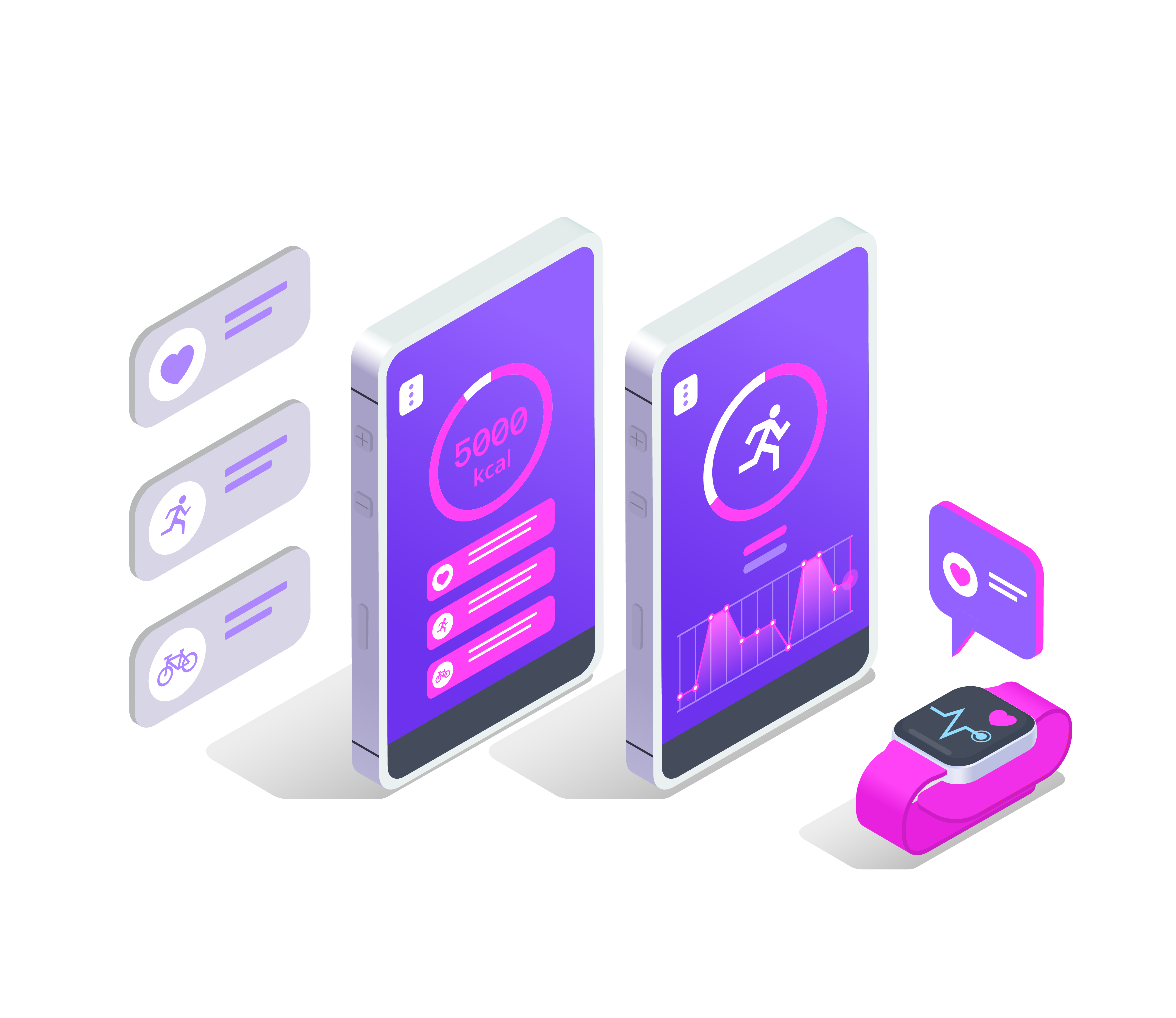 Patient Perspectives: The Concern for Data Security and Privacy
Patient Perspectives: The Concern for Data Security and Privacy
Transparency and data are essential to the evolution of health care. A recent review of patient perspectives on data privacy shows continued uncertainty over the eroding security and confidentiality of Personal Health Information (PHI) in an everchanging connected world. A 1,000-patient survey recently released by the American Medical Association (AMA) and conducted by Savvy Cooperative found worry over data privacy protections and confusion about who can access PHI. To summarize the survey’s outcomes in one sentence, patients are deeply concerned over the lack of security and confidentiality of personal health information.
READ THE FULL ARTICLE BELOW OR ON DIGITALHEALTHTIMES.COM
Digital health tools that facilitate innovative methods to improve care, enable lifestyle change, and create efficiencies are progressing quickly. And as patients (consumers) continue to adopt digital tools, healthcare organizations are rapidly leveraging these technologies to improve care and the patient experience. While digital health products offer many benefits, they also bring concerns about health information privacy and security. Patients worry about the repercussions of having little or no control over using and sharing personal health data. The AMA survey found that more than 92% of patients believe privacy is a right and that their health data should not be available for purchase.
Like many other aspects of our daily life, digital health information also makes us—and our personal information—vulnerable to data breaches. Concerns for data security and privacy goes beyond recent large-scale US cyberattacks. The frequency and severity of attacks affecting the number of individuals and costs to healthcare companies have increased over the past five years. According to data from the US Department of Health and Human Services, there were 713 known breaches affecting approximately 45.7 million individuals in 2021, an increase from 329 breaches affecting 16.7 million individuals in 2016.
Based on the survey results, the AMA discovered that by understanding the patient perspective on data privacy, the industry and government could better act to help patients and their care teams protect medical information and strengthen trust. As highlighted in the image below, patients are most comfortable with their physician or hospital accessing their data. They are least comfortable with social media sites, employers, and big technology companies accessing their health data.

The digital health industry is exhibiting signs of maturity as it moves from a field of aspiring early-stage start-ups to more stable companies with validated products. With more validated products in the market, there is a growing need for stronger regulations to support patients’ right to control, access, and delete personal data. The AMA survey found that an overwhelming percentage of patients demand accountability, transparency, and control regarding health data privacy, with 94% expecting companies to be held legally accountable for using health data. Strong regulations are needed to restore trust in data exchange that facilitates accessible, equitable, and personalized care. Patients must have meaningful control and a clear understanding of how data is used and shared.
As highlighted in a Health Exec article by Innovate Healthcare, the AMA proposes strong regulations for individuals’ right to control, access, and delete personal data collected. The Supreme Court’s June decision to overturn Roe v. Wade, which guaranteed access to abortion care for nearly 50 years in the United States, also set off a vast privacy issue in healthcare. The move allowed states to restrict, outlaw, or ban abortions and therefore challenge the right to privacy by potentially enabling law enforcement to gain access to health data related to abortion care and pregnancy. In 1973, the Supreme Court ruled in Roe that abortion care fell under the protection of the right to individual privacy and due process under the 14th Amendment.
The AMA calls on policymakers to enact strong regulations around health data privacy. The AMA outlined five privacy principles for a national privacy framework.
The AMA advocates for near-term app transparency requirements, including app privacy attestations collected by EHRs that will increase transparency and bolster individuals’ choice of apps. While the American authorities discuss federal privacy legislation, the AMA seeks to ensure that the resulting privacy law protects the physician-patient relationship. The AMA has also developed a guide to help app developers build privacy-forward technologies.
59% of survey respondents worry about health data companies use to discriminate against them or their loved ones or exclude them from opportunities to find housing, gain employment and receive benefits. Privacy efforts must include non-discrimination protections to avoid exacerbating existing inequities or creating new ones. Patients must trust that the information captured using digital health tools will not be used against them.
How can you keep your personal health information safe? If you’re wondering how to protect healthcare data, the first step is simply being aware. The National Council on Aging has an informative article for patients that might not understand the sometimes confusing terminology used in the digital health space.
Ultimately, digital health cannot exist without surrendering a part of our privacy. The advanced technologies driving the transformation cannot improve without our data. And without data, they can’t be implemented as a standard of care in medicine.
The American Medical Association is the physicians’ powerful ally in patient care. As the only medical association that convenes 190+ state and specialty medical societies and other critical stakeholders, the AMA represents physicians with a unified voice to all key players in health care. The AMA leverages its strength by removing the obstacles that interfere with patient care, leading the charge to prevent chronic disease and confront public health crises, and driving the future of medicine to tackle the biggest challenges in health care.
Tags: Digital Transformation, HealthTech, Privacy
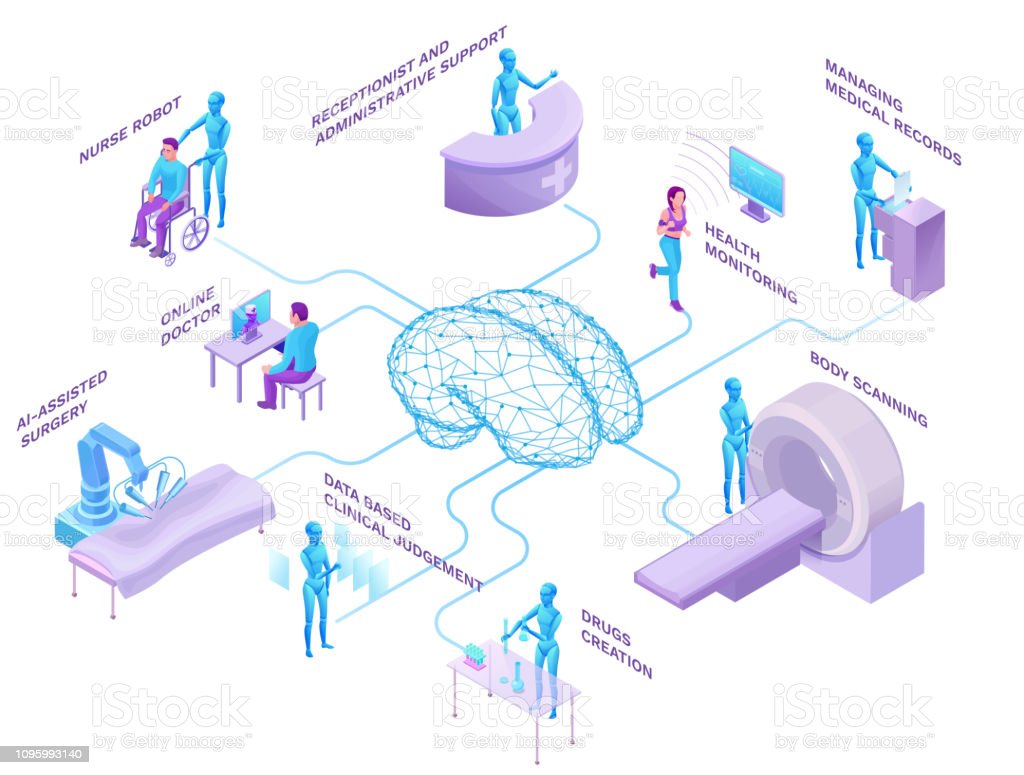 Healthcare AI: From Theory to Practice
Healthcare AI: From Theory to Practice
Consumerization is transforming the healthcare space with digital technologies causing a fundamental shift in consumer behavior, demands, and preferences. This transition has changed the way consumers (patients) interact with healthcare providers, with digital standardizing healthcare experiences and consumer engagement. As one report titled Healthcare in the Digital Age explained, “the dynamics of the healthcare industry are changing—with innovative digital solutions bringing about a shift from the curative care model to a more preventive care model.”
Artificial Intelligence (AI) is a set of technologies that includes automated systems able to perform tasks that usually require human intelligence, such as visual perception, speech recognition, and decision-making. AI in healthcare can apply these systems to perform administrative or clinical functions, ultimately augmenting human activity. In the US, healthcare organizations have yet to unlock the full potential of AI, even though the majority are open to leveraging its extensive capabilities. The opportunity is realized and has been extensively measured.
It’s interesting to see how the industry has changed to meet the demands and expectations of today’s patients. Digital health tools that facilitate innovative methods and modalities to improve care, enable lifestyle change, and create efficiencies are progressing quickly. And as patients (patient = consumer) continue to adopt digital interactions, healthcare organizations are rapidly leveraging these technologies to improve care and the patient experience.
As healthcare organizations seek more customized, data-driven patient care, adopting technologies to promote digital engagement, data management, and workflow optimization is vital. Cloud platforms, along with data analytics and AI, can help organizations achieve these goals while focusing on patient care and security. Artificial Intelligence (AI) and cognitive computing can empower patients, transform the practice of medicine and save the health care industry over $150 billion by 2025. According to one report from Frost and Sullivan, AI could improve health outcomes by up to 40 percent and reduce treatment costs up to 50 percent by improving diagnosis, increasing access to care, and enabling precision medicine.
In short, AI enables greater accessibility, relevancy, and actionability of healthcare information. Healthcare providers may not treat a physical patient but instead analyze and treat data in the future. Recent innovations will create lasting improvements in healthcare accessibility. As research in AI and other digital health tools continues, documentation of real-world outcomes, measured economically and clinically, is necessary.
AI has a substantial reach and can magnify the reach of care by integrating health data across platforms. The 2020 Accenture healthcare AI report found that essential clinical health AI applications can potentially create $150 billion in annual savings for the US healthcare economy by 2026. These cost savings potential is one reason healthcare organizations will continue to invest in digital solutions to deliver new sources of value over the foreseeable future, whether it's to lower the cost of care, improve labor productivity, or enable better patient/customer experiences or another desired outcome.
AI is getting increasingly sophisticated at doing what humans do, but more efficiently, quickly, and at a lower cost. Building off the Accenture AI report, growth in the AI health market is expected to reach $6.6. billion by 2021, with the market growing more than 10x by 2025. Patients/consumers also want AI, which leads to data security questions and fears. Organizations within the digital health/AI ecosystem will need to work together ethically and be secure in managing critical information on patients.
Healthcare organizations mostly all agree that AI and machine learning will affect the future of work, therefore, have an opportunity to employ AI to make a systematic shift that affects every process, piece of data, healthcare professional, and patient. While investments and adoption are expected to exponentially grow, organizations must understand the full potential value AI delivers financially, systematically, and organizationally.
AI can help prevent medical mistakes and flag those most at risk for problems. In the January 2020 publication of the scientific journal Nature, researchers found that by using AI technology, there was a reduction in false positives and false negatives when it came to diagnosing forms of breast cancer. Through reduced labor costs alone AI represents a notable opportunity for organizations to better control their bottom line in new payment regard while capitalizing on new growth potential.
Several surveys conducted in 2019 found that the ability to improve or assist in the accuracy of diagnosis and clinical outcomes is the greatest impact AI will have in the short term on patient care. This same survey also found that of those organizations that have yet to adopt AI, cost remains the most significant obstacle in implementation—followed by a lack of strategic direction” within their organization.
While many American healthcare professionals are not currently using AI, many healthcare professionals would feel comfortable using it for a range of areas, suggesting a general openness to unlocking the full potential of AI in the future. As these and other AI applications gain more experience in the field, their ability to learn and act will continually lead to improvements in precision, efficiency, and outcomes.

With much of health and health care moving onto digital platforms, there has been remarkable growth in the amount of information generated. As the conversation on the potential wonders of AI becomes more mainstream, it is easy for misguided fears and optimism to hide its legitimate near-term possibilities. The purpose is to build competency in AI and data science to the point that health care AI presents an assistive benefit to humans rather than replacing them. And of course, the need for privacy and huge amounts of data remains a challenge for AI in healthcare.
Mistaken fears and reporting isn’t the only limitation to AI adoption; low healthcare system literacy is a key barrier for any new technology or service model. This is notably true in the US, where reports are finding over half of the American population ranks low in healthcare system literacy – causing an estimated $4.8 billion annual organizational cost burden for payers. Our next article will cover the role digital health technologies can play in improving healthcare system literacy, also known as social detriments of health.
Tags: AI, Health and Wellness, HealthTech
 Consumer Experience Trends in Healthcare 2021| Press Ganey Report
Consumer Experience Trends in Healthcare 2021| Press Ganey Report
Press Ganey, a national leader in healthcare consumer and workforce engagement, has released its 2021 Consumer Experience Trends in Healthcare report. The publication includes key drivers behind current healthcare consumer behaviors and strategies for health care leaders to strengthen their digital footprint in 2022 and beyond. In short, the report found that delivering a five-star experience is essential as online reviews are the most decisive factor in a patient’s choice to schedule an appointment with a provider.
Change has long been a constant in healthcare, but it has dramatically accelerated in recent years. Digital health tools that facilitate innovative methods and modalities to improve care, enable lifestyle change, and create efficiencies are progressing quickly. The digitalization of healthcare provides a better healthcare delivery experience for both patients and clinicians. Before the COVID-19 pandemic, consumer interest in using digital solutions to engage with their healthcare team rose. As digital technologies become more of the norm in healthcare, there’s an opportunity to rethink how to do healthcare by embedding the changes that have worked well during the pandemic.
As digital consumerism in healthcare accelerates, expectations for the patient experience continue to evolve equally. The patient experience can no longer be defined alone by the clinical care setting. Today, the patient experience encompasses every step of the healthcare journey, including navigating the web, scheduling, billing, insurance, and beyond. The digital behaviors that gained momentum in recent years have been hard-coded into the patient journey. In the wake of COVID-19 and going beyond 2022, healthcare organizations must commit to a digital- and consumer-focused strategy to shape the patient experience.
In September 2021, Press Ganey surveyed 1,000+ consumers to unlock insights into how they approach their journey to care. The findings provide a roadmap for accelerating digital transformation in 2022 and converting more care seekers into happy, loyal patients.
Failure to review the consumer experience at every touchpoint can negatively influence a healthcare organization’s brand, reputation, and revenue. The Press Ganey 2021 Consumer Experience Trends in Healthcare report focuses on the following topics:
As pointed out in the Press Ganey report, the digital experience doesn’t stop there. Patient acquisition and loyalty are increasingly dependent upon the digital healthcare experience throughout every touchpoint along the patient journey. According to the analysis:
As other reports and studies have identified, the Press Ganey report finds that consumers and industry leaders agree that technology improves health outcomes and increases care access. Digital technologies have rapidly penetrated many aspects of consumers’ interactions with their health care team, including how they make care decisions and interact with their health plans. Additionally, these technologies are benefitting the patient experience and increasing patient confidence. Driving adoption today will pave the way for more widespread future smart technologies.
Referencing the Press Ganey report, consumers rely heavily on digital channels when selecting a provider. Today, 51.1% of patients turn to the web when choosing a new primary care provider (PCP), while 23.8% first seek referrals from another healthcare provider and 4.4% from an insurance or benefits manager.
In this era of empowered healthcare, consumers expect easy and streamlined access to care. Given these high expectations, more people (54.4%) consider their healthcare journey difficult today than in 2019 (50.4%). According to respondents in the Press Ganey report, the top three challenges in finding a healthcare provider are 1) appointment availability, 2) finding an in-network doctor, and 3) taking too much time.
As healthcare leaders prepare for the year ahead, one thing is clear: Organizations must prioritize their digital consumerism strategies to keep up with current expectations and successfully acquire and retain patients for years to come.
According to the Press Ganey report, healthcare organizations should consider the following takeaways to optimize digital touchpoints in 2022 and beyond:
Healthcare providers deserve technology that lets them focus on what matters: patient care. And consumers deserve technologies that are as passive as possible. The key to successful behavior change is developing habits that make change more accessible.
The research was commissioned by Press Ganey and conducted through an independent third-party market research agency during September 2021. Press Ganey’s survey depicts findings from 1,140 U.S. adult respondents representing various demographics across multiple regions, income levels, genders, and ages. Findings were benchmarked against the results of a 2019 survey to determine essential shifts in trends.
Tags: Customer Experience, HealthTech, Innovation
 Health Care Consumers – The Digital Health Care Experience
Health Care Consumers – The Digital Health Care Experience

Convenience has become the new currency. Over the past decade, consumers have grown accustomed to a seamless digital experience. At the same time, health care consumers (patients) have taken a more active role in educating themselves and directly managing their health. With more than 80% of consumers researching their healthcare options, new technologies provide consumers with new ways to live healthy and manage certain conditions. And for healthcare organizations to gain a competitive position in the minds of consumers, convenience is a primary concern. Healthcare consumerism should empower consumers to be involved in their health care decisions throughout every step of the patient journey.
However, while rising customer expectations drive new business models, increased choice pressure also affects existing healthcare organizations. Consumers are increasingly cautious about how, when, and where they pay for healthcare services. They will make decisions, less as patients and more as individuals within specific contexts – as a mother, daughter, friend, and family member. Increased price transparency is prompting more pricing information and, therefore, more shoppable healthcare services, according to a 2020 McKinsey consumer healthcare survey. In other words, healthcare organizations should envision their patients as health care consumers.
The era of digital health. Soon it will be just the era of health. Digital is becoming so intertwined with health care that it’s now to be expected by consumers. Consumer loyalty is a significant driver of health system profitability. Still, unfortunately for hospitals and health systems, the overall brand preference among healthcare consumers continues to decline, from 31% in 2018 to 36% in 2020. While many customers lack a clear preference for a given healthcare brand, this is likely not a reflection of negative care experiences. As informed consumerism rises, health systems will need to shift how they attract, engage, and treat new patients. This expectation is why the research, development, testing, and deploying of novel digital health technologies and tools should be considered long-term investments that will net great returns.

Healthcare organizations must continue to prioritize digital health solutions, including a protocol to support efficiency. There is a direct correlation between health systems with structure and processes surrounding innovation and the ability to implement and scale innovation quickly.
In the traditional healthcare settings, patients were not involved in decision-making about their health and disease management. This began to shift dramatically in the 2010s with the digitalization of healthcare tools and services. In the last decade, we have changed care models by virtualizing medicine, where it makes clinical and economic sense. Although it took a pandemic to drive clinical adoption of digital health tools, has anything changed how health care consumers want to interact with their providers? The simple answer is…yes. In a recent 2021 HIMSS survey, “Patient Communication Preferences in 2021,” released by SR Health, patients express that they want more digital tools, especially text messaging. The survey also found that age continues to be less of a barrier to electronic forms of communication.
Rapid development and deployment of innovations will be critical in the post-pandemic world. While the COVID-19 pandemic has placed unprecedented demands on modern healthcare systems, the industry’s response has vividly demonstrated its resilience and ability to bring innovations to market quickly. At the height of the pandemic, providers rapidly scaled offerings and saw 50 to 175 times the number of patients via telehealth compared with what they did before.
Transparency and data are essential to the evolution of health care. The current trend is that health systems regard innovation with an emphasis on quantifiable results, such as revenue generation or reducing costs. Shrinking revenue at traditional health systems results from widespread industry changes, including lower reimbursement, movement of care to outpatient settings, and what health care consumers expect from their patient experience. The resulting pressure has health systems looking to innovation as revenue generation.

The health care industry’s appetite for data has grown beyond storing and sharing medical histories. In a recent PricewaterhouseCoopers (PwC) report on top health industry issues of 2020, health care consumers and incorporating digital health into organizational strategies are two significant focus areas for healthcare organizations. In 2020, healthcare organizations made strategic deals to grow larger and expand into new identities with platforms anchored in value, innovation, customer experience, and population health. There’s now a better understanding that digital and analytics technologies have the potential to predict health needs and engage systematically with health care consumers in real-time.
During the five years leading up to 2020, the adoption of digital health steadily climbed. The pandemic accelerated adoption even further, and the rise continued. However, the rate of change in adoption differed by technology and subgroup. In Rock Health’s 2020 Market Insights Report: Chasing a new equilibrium, confidence in digital health technologies and tools’ potential continued to progress. In 2020, venture capital dollars flowed to US digital health companies at a new all-time high, with over $14B invested across 440 deals.
The first half of 2021…2021 already surpassed 2020’s overall funding record, with $14.7B invested across 372 US digital health deals with a $39.6M average deal size. Fifty-nine percent of that funding came from 48 mega deals ($100M+), including one of the largest single rounds of investment in digital health history: health care consumer organization Noom’s $540M Series F round. Monthly funding in June 2021 ($3.1B) was almost triple that of June 2020 ($1.1B), when digital health funding numbers accelerated after the first COVID-19 shutdowns.

Digital tools that facilitate innovative methods and modalities to improve health care, enable lifestyle change, and create efficiencies are progressing quickly. According to the H1 2021 Rock Health Digital Funding Report, investors didn’t change their overall strategies going into—or emerging from—the pandemic. Instead, they’re doubling down on their bets. The top-funded value propositions for 2020 and H1 2021 are consistent, with companies catalyzing biopharma/device R&D ($2.7B) and those delivering on-demand healthcare services ($2.6B) bringing in the most dollars.

Consumer engagement has become increasingly crucial for all healthcare industry stakeholders. Health care consumers want high-quality care that is easily accessible and affordable. The theory of health care consumers is that they take ownership of care decisions based upon costs, understand the full scope of options available to them based on research and trustworthy sources of information, and leverage their use of technologies.
As more health systems adopt a digital health business strategy, future reports will find healthcare organizations offering digital tools more efficiently and greater utilization of these devices and services by patients.
- LOGAN HARPER
Tags: Emerging Technology, Innovation, HealthTech
 Leveraging Digital Therapeutics for Managing Chronic Disease
Leveraging Digital Therapeutics for Managing Chronic Disease
Location: Seaport World Trade Center in Bosto Fees: -
Service Type: Service Offered